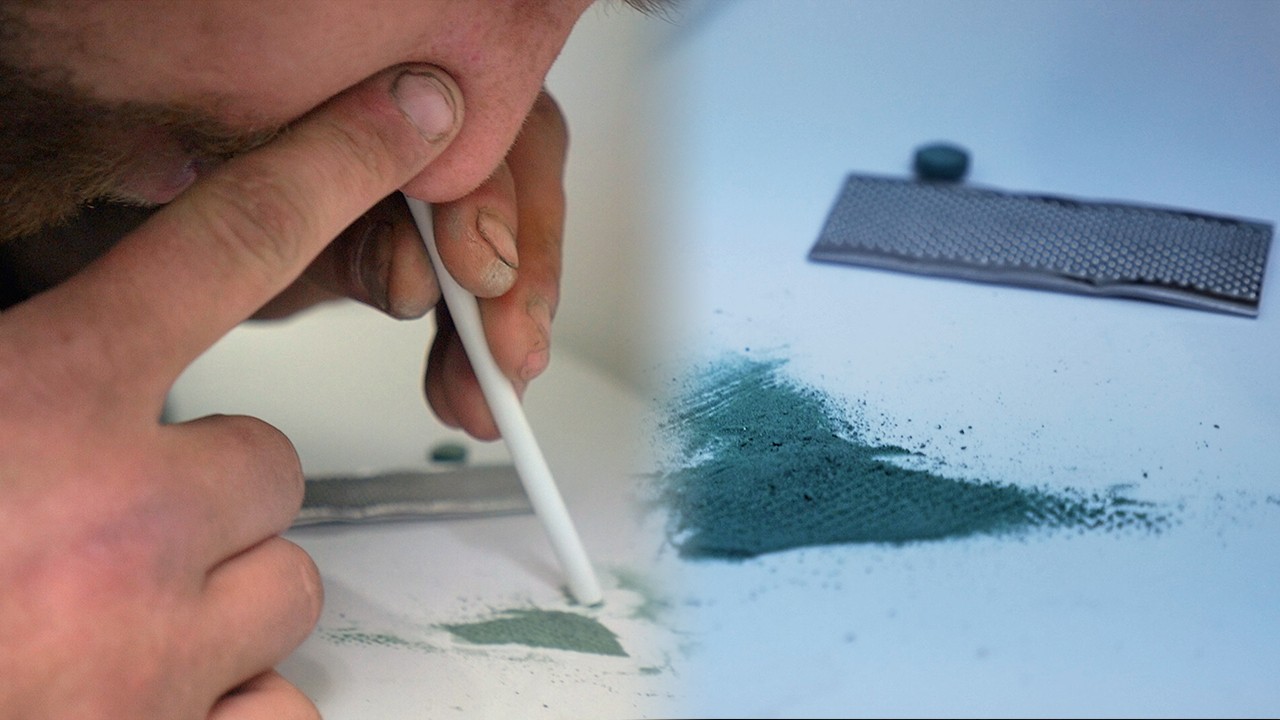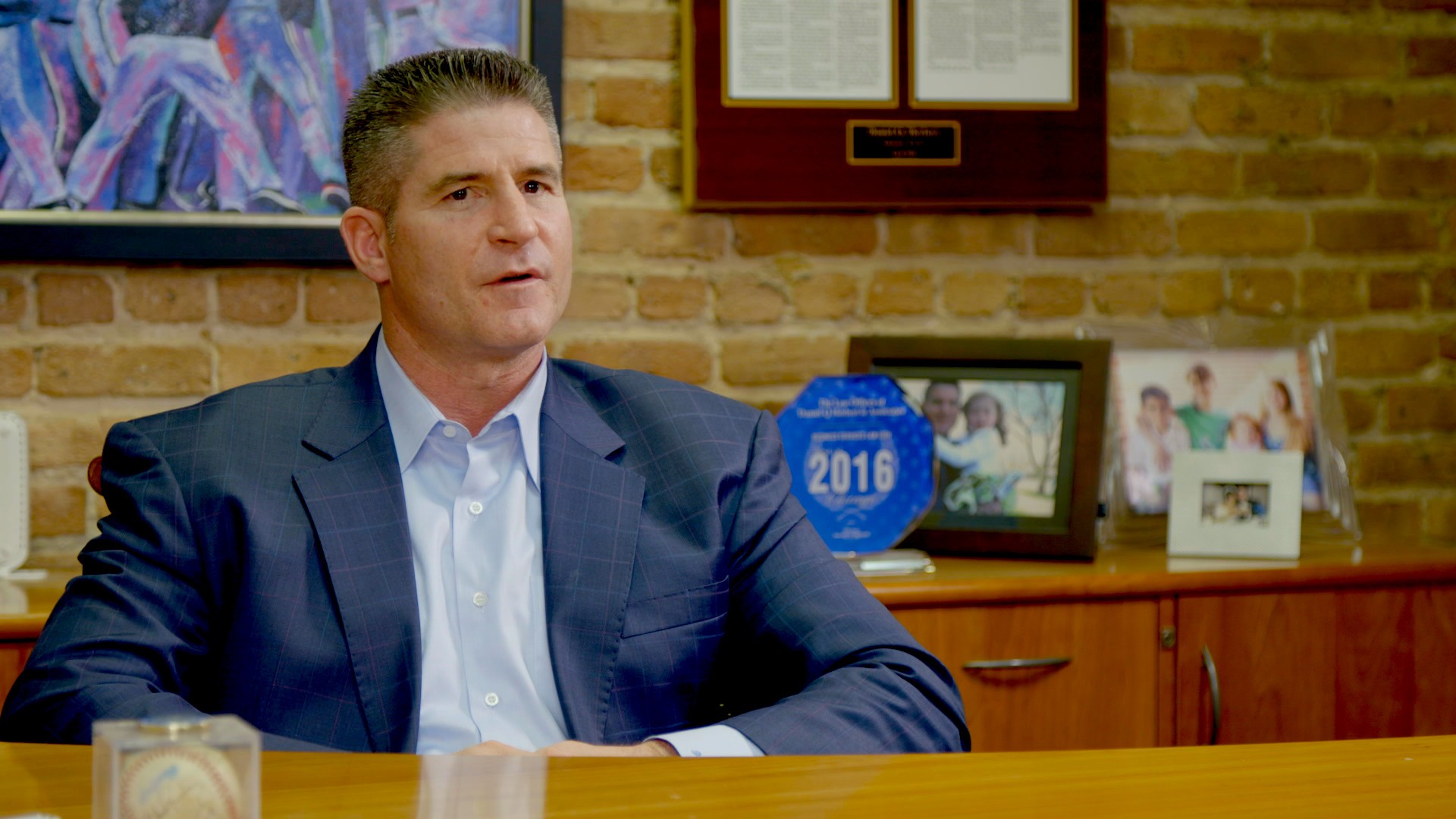Last month, the United Nations banned two chemicals used to make the super potent opioid fentanyl in what the US government hailed as a "historic" vote. Between 2014 and 2015 alone, American deaths involving synthetic opioids—primarily illegally-manufactured fentanyl, which is 50 times stronger than heroin—increased by 72 percent, according to the Centers for Disease Control (CDC). The two precursors will now be placed under strict "scheduling" or international control, so manufacturers can't easily sell them to just anyone.
Advertisement
But chemists who work with the drug don't believe the change will do much to halt the death toll. The real mystery is why dealers—who are typically smart enough businesspeople to know that killing customers not only reduces repeat business but also draws unwanted police attention—continue to sell so much of it.Kirk Maxey, MD, president of Cayman Chemical, has been thinking about these questions for several years now—at least since his company started working with fentanyls early this decade. "Why do that?" he wondered in an interview. "Why sell something that is lethal to your customer base?"Maxey has a colorful history. In the late 2000s, he realized that his years as a prolific medical school sperm donor at the University of Michigan meant that he'd probably fathered around 400 children, beyond the five he had with his wife. Consequently, he began lobbying for better regulation of sperm banks. To help his biological children find each other—and avoid inadvertent incest—he created a foundation and has also posted his entire genome publicly, so that they have information about their genetic history.Fentanyl: The Drug Deadlier Than Heroin He founded his chemical company, Cayman, in 1980, and now produces "reference standard" materials for forensic use by the DEA and other law enforcement agencies. That's where fentanyls come into the picture. When cops get a sample of a substance they suspect is some kind of synthetic opioid—often, because it has been associated with one or more overdose deaths—frequently, they send it to Cayman's lab, now located in Ann Arbor, Michigan.
He founded his chemical company, Cayman, in 1980, and now produces "reference standard" materials for forensic use by the DEA and other law enforcement agencies. That's where fentanyls come into the picture. When cops get a sample of a substance they suspect is some kind of synthetic opioid—often, because it has been associated with one or more overdose deaths—frequently, they send it to Cayman's lab, now located in Ann Arbor, Michigan.

Advertisement
"That's our most exciting challenge," he said. "We know it's new, but we don't know what they've done."When Maxey's chemists get the sample, they examine it using techniques like mass spectrometry, trying to determine the molecular structure. "We just got one," he told me when we spoke last month. "It looked like a fentanyl derivative, but it didn't have the right mass."The substance in question seemed chemically similar to carfentanil—an opioid used as an elephant tranquilizer that is 10,000 times more potent than morphine—but Maxey found otherwise. This case was urgent, as many of his cases are, since the rogue substance had already been associated with several deaths. "It's a new compound," he concluded. While Maxey has dubbed that one "2-methoxy-acetylfentanyl," he conceded naming conventions for these substances are "ad hoc," without clear rules."Reference standard" or "certified reference material" chemicals are needed to calibrate the equipment used to test drugs. This is done in order to ensure that when chemists test an unknown substance and think they have, say, fentanyl on their hands, a known sample of that chemical yields the same results. Brian Mayer, a staff researcher at Lawrence Livermore National Laboratory in California who also studies fentanyls, says this work is particularly necessary in forensics for legal reasons.Companies like Cayman and its competitors, he told me, "play a critical role in demonstrating that what we think [a chemical is] as a forensic lab is actually reality."
Advertisement
Chemists like Mayer and Maxey know that the new UN controls won't deter production of fentanyls—there are too many easy ways around them. For one, according to Mayer, "Those two precursors are quite simple to make from what I believe are non-scheduled precursors." So, this merely adds another step to the production process, rather than shutting it down.Secondly, there are easy ways to replace them and make new compounds that are likely to have similar effects. "My opinion is that these restrictions will actually cause a proliferation of new structures, to the extent that they cause any problem at all for clandestine labs," said Maxey.The only time supply controls tend to have even short-term effects on an illegal drug market is when the precursors needed are difficult to replace. For example, in 2008, the UN burned 33 tons of safrole, a product of the sassafras plant, which was once seen as an essential chemical for making MDMA. This single bust in Cambodia resulted in a worldwide shortage of Molly.
As Mike Power, author of the indispensable Drugs Unlimited, which originated with his quest to discover the cause of the ecstasy draught in the UK, told me, "There wasn't any MDMA to be had, which is unusual in a market with 500,000 participants every week."But even this "success" shouldn't comfort drug warriors: Within a year, according to Power, mephedrone ("meow meow"), a so-called legal high, became the fourth-most popular drug in the UK, filling the market gap. And wily chemists soon discovered a workaround for MDMA synthesis: a substance called PMK-glycidate. This actually resulted in new tablets that had higher levels of real MDMA in them than had been seen previously."It's like shooting radiation into a colony of fruit flies. You induce mutations and they branch out." —Kirk Maxey
Advertisement
Unfortunately, the chemicals needed to make fentanyl and similar drugs are even easier to replace. "This attempt to ban intermediates will cause a spray of dangerous stuff to come out," Maxey predicted.Worse, the effects of the new chemicals will, at least for a while, be completely unknown. While something may look like it will work on an opioid receptor in the same way fentanyl does, there is no way to know for sure without animal testing, which is not exactly done to FDA standards (or at all) by underground chemists before they introduce a product. Similar-looking drugs can sometimes even have opposite effects—and some byproducts of fentanyl manufacturing can produce extremely hazardous substances, such as MPTP, which destroys the brain's dopamine neurons and rapidly causes Parkinson's Disease.Given this, figuring out why fentanyls have become such a large part of the illicit opioid market is an urgent question. Demand isn't the answer: users and even dealers tend not to know what they are getting and users tend to prefer a high that lasts longer, doesn't rapidly induce unconsciousness and isn't so easily deadly.Meet the go-to lawyer for Chicago cops in trouble with the law. One reason is clearly cost and ease of manufacture. To make heroin or morphine and other semi-synthetic opioids like Oxycodone and hydrocodone, you first need to grow poppies. Then, you've got to pay the farmers and transport bulky material to processing centers, which also require employees, materials, guards and protection against law enforcement. Finally, you have to smuggle the finished product across borders to customers.
One reason is clearly cost and ease of manufacture. To make heroin or morphine and other semi-synthetic opioids like Oxycodone and hydrocodone, you first need to grow poppies. Then, you've got to pay the farmers and transport bulky material to processing centers, which also require employees, materials, guards and protection against law enforcement. Finally, you have to smuggle the finished product across borders to customers.

Advertisement
With fentanyls, in contrast, a drug lord has to pay only one or two chemists—and she gets a much smaller and easier-to-hide product that only needs to be transported once. As with automation in other industries, this produces a shorter supply chain in which far fewer employees are needed, which is valuable in an illicit industry where having fewer people knowing what's going on makes a huge difference in terms of risk of being caught or robbed."I think fentanyl got introduced because of simple cheapness," Maxey told me. He compares law enforcement efforts to evolutionary pressures on species, which force them to change to survive in a new environment. "It's like shooting radiation into a colony of fruit flies. You induce mutations and they branch out," he said.Which raises a novel but highly unorthodox way to beat the fentanyl market: introduce a synthetic that is cheap to make and produces a heroin-like opioid high, but is far less deadly. The best way to do so, of course, is simply by expanding access to existing maintenance treatments like methadone, buprenorphine and even heroin itself—the easier these are to access, the more they can undercut the illegal market, even if people do not entirely quit using street drugs. By maintaining tolerance to opioids, such maintenance medications could also cut the death rate by 50 percent or more.Of course, an enterprising kingpin who wants to avoid the problem of customer deaths and the elevated legal pressure they bring might do the same thing. And smart policing should target sellers of the most deadly substances so as to create selection pressure in favor of less harmful drugs."Better, safer compounds are the way out of this," Maxey says.Follow Maia Szalavitz on Twitter.
